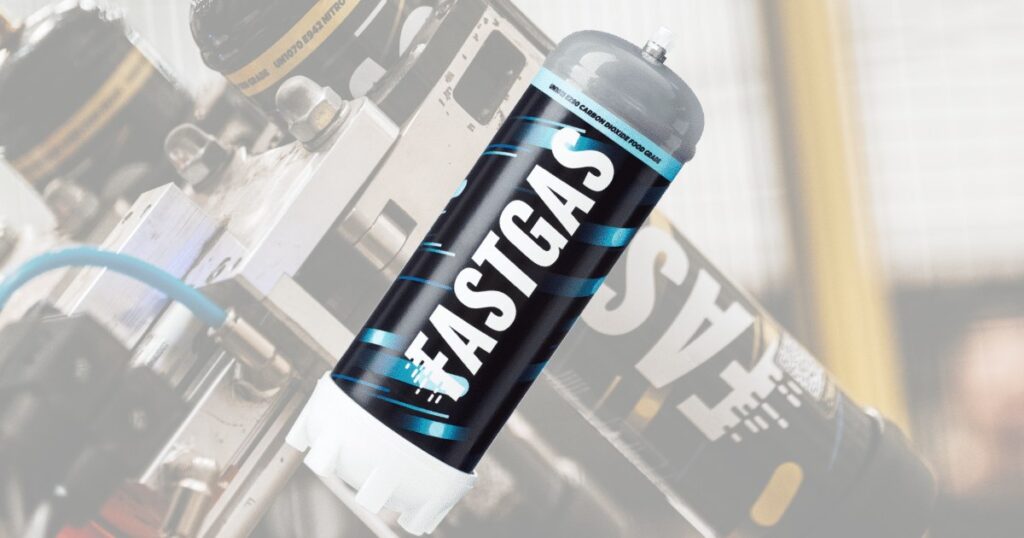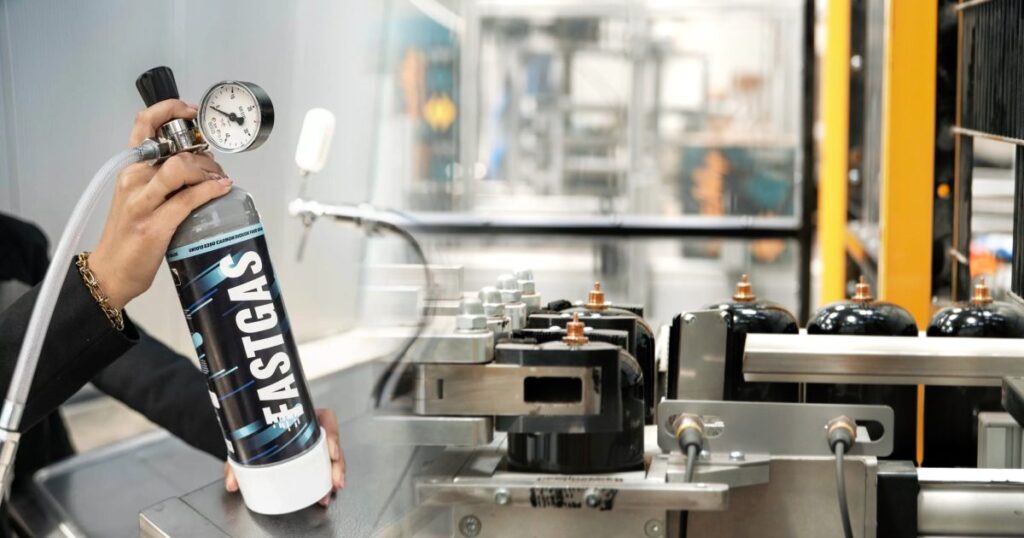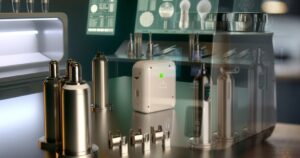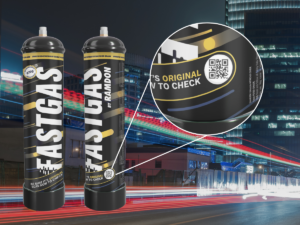Basics of Cream Chargers: Understanding Their Use and Functionality
FastGas Blog
Whipped cream chargers, small cylinders packed with nitrous oxide, are the cornerstone for creating the perfect whipped cream. Whether you’re a home baker or a professional chef, understanding how to use a whipped cream charger or the basics of cream chargers is essential. These chargers are designed to be inserted into a specifically made cream dispenser, pressuring the cream so it expands and becomes whipped when released. This quick and efficient process saves time and produces a consistent product every time.
Maintenance is just as crucial as correct usage. To ensure your whipped cream charger performs optimally, regular cleaning of the dispenser and proper storage of the chargers is necessary. Adhering to best practices will extend the life of your whipped cream chargers and maintain the quality of the cream they produce. If you have questions about using or maintaining your chargers, the answer is likely a quick search away, with many resources available for troubleshooting common issues.
Key Takeaways
- Whip cream chargers are integral in quickly creating consistent, high-quality whipped cream.
- Regular maintenance and correct usage are key to the longevity and performance of cream chargers.
- Reliable information on using and maintaining cream chargers is readily accessible for users.
Understanding Cream Chargers
Cream chargers are indispensable tools in the culinary world for creating light, fluffy whipped cream and other aerated delicacies. Understanding their components, how they work, and the proper practices for use and storage are crucial for achieving the best results in taste and texture.
Components and Science
A cream charger is a small steel cylinder containing nitrous oxide (N2O) gas like FastGas Nitrous Oxide Cylinder. When released into a cream dispenser under high pressure, this gas reacts with the fat content in the cream, expanding it to create a fluffy whipped cream. Like those by Fast-Gas, quality cream chargers are essential for consistent flavour and texture. The science hinges on the solubility of nitrous oxide in fat, which then forms bubbles, leading to the desired airy whip.
- Shell: Typically made from steel, it’s durable to withstand the pressure.
- Gas: Food-grade nitrous oxide is the standard, differing fundamentally from carbon dioxide.
Usage and Applications
To use a whipped cream charger, ensure you have a high-quality cream charger compatible with your dispenser. Inserting the cartridge into a whipped cream dispenser and engaging the lever releases the pressurised nitrous oxide. The gas expands within the dispenser, and when the nozzle is activated, you get perfectly whipped cream. Beyond desserts, these chargers can create foams and espumas, adding a creative touch to modern cuisine and molecular gastronomy.
- For whipped cream: Chill the cream and dispense immediately for best results.
- For sauces and mousses: Utilize different fat contents to achieve various textures.
- Innovative uses: Infuse flavours into liquids for foam toppings or espumas in culinary creations.
Safety and Storage
It’s essential to store them properly to ensure the safety and longevity of your whipped cream chargers. Keep chargers in a cool, dry place away from direct sunlight to avoid degrading the gas quality. Chargers under high pressure should be handled carefully to prevent injury, and never overfill your dispenser to avoid malfunction or damage.
- Handle with care: Avoid dropping, as high-pressure containers can be dangerous.
- Storage: Keep in a refrigerator to maintain quality and deter bacteria growth.
- Disposal: After use, dispose of chargers responsibly; never attempt to refill them.
By focusing on how to use whipped cream chargers effectively, you can enhance your recipes and elevate your dishes to new heights with impeccable texture and flavour. Always opt for reputable brands like Fast-Gas for high-quality food-grade chargers for your culinary ventures.
Maintenance and Best Practices
Navigating the maintenance and best practices for cream chargers ensures the longevity and safety of your kitchen tools. Proper procedures and innovative considerations are crucial to getting the most out of your whipped cream dispensers.
Operational Procedures
Before operating your whipped cream charger, it’s essential to ensure your whipping siphon is clean and all components, such as the lever, trigger, and valve, are in good working order. A step-by-step guide typically includes:
- Inspecting the charger for any signs of wear or damage.
- Cleaning all parts thoroughly before and after each use.
- Using the charger as directed—insert a cream charger (N2O or CO2) into the siphon to infuse your heavy cream with gas, following the manufacturer’s instructions for using a whipped cream charger.
- Shaking the siphon gently to incorporate the gas evenly for perfectly fluffy whipped cream.
Heavy whipping cream and flavourings, if used, should be fresh to optimise the taste and quality of your culinary creations.
Innovation and Environmental Considerations
Cream chargers, such as those offered by Fast-Gas, provide a modern solution to whipped cream preparation. To minimise environmental impact, it is advisable to use recyclable chargers. Proper disposal or recycling of chargers can reduce waste and promote sustainability in the kitchen.
Advancements in Culinary Techniques
Your creative journey with cream chargers goes beyond simple whipped cream. Embrace molecular gastronomy and modern cuisine by experimenting with infusions, mousses, and sauces. The precise control over the expansion of liquid cream allows for accurate and innovative textures in culinary experiments.
Culinary Experiments Beyond the Kitchen
While the primary purpose of cream chargers is culinary, they can also fuel creativity beyond the kitchen. Some model rocket enthusiasts have repurposed chargers as micro-hybrid engine components due to the N2O (commonly known as laughing gas or NOS) used in both applications. Always follow safety precautions, and remember that these advanced uses require technical knowledge and a keen attention to detail.
Frequently Asked Questions
Fast-Gas products are known for their quality in the world of cream chargers, providing you with the essential tools for culinary creativity. Here, you’ll find specific answers to common questions, ensuring safe and effective use.
What are the best practices for using a whipped cream dispenser?
Before you learn how to use a whipped cream charger, you must chill your dispenser beforehand, fill it with the recommended amount of cream, and always follow the manufacturer’s instructions for inserting the N2O cartridge correctly to ensure optimal performance.
How long can you expect a N2O cartridge to last during use?
During use, a single N2O cartridge is designed to whip up to 0.5 litres of cream, which should last until it has been dispensed if used correctly. Actual longevity can vary based on your specific usage pattern.
Are there any legal concerns associated with the use of cream chargers?
There are legal concerns with N2O due to its misuse as a recreational substance. Ensure your use of cream chargers is strictly for culinary purposes, maintaining compliance with local legal regulations.
How much nitrous oxide does a typical whipped cream charger contain?
A standard cream charger contains 8 grams of nitrous oxide, sufficient to whip a usual amount of cream when used in a whipped cream dispenser.
Can you provide some creative recipes that involve cream chargers?
Indeed, from sweet to savoury mousses to enhancing soups with a frothy top, your culinary ventures are limitless with a whipped cream charger. Try infusing flavours directly into the cream before whipping for a unique twist on desserts or garnishes.
What is the functional difference between nitrous oxide and cream chargers?
Nitrous oxide is the gas used within cream chargers to aerate the cream. The charger contains the gas and is introduced into the cream held within a dispenser.




